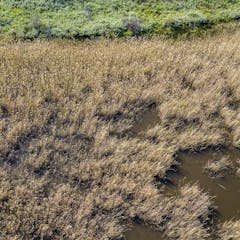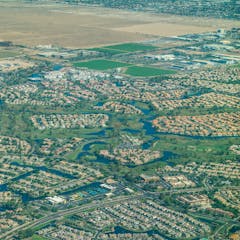
Articles on Wetlands
Displaying 1 - 20 of 132 articles

The Supreme Court drastically reduced federal protection for wetlands in 2023. Two environmental lawyers explain how private businesses and nongovernment organizations can help fill the gap.

Scientists with expertise in mud and peat were a key part of planning the Normandy landings in 1944.

Climate policy has been based on a global average for salt marshes’ ability to capture carbon, but outside the tropics marshes accumulate less carbon.

It shouldn’t take sustained public outrage to stop environmentally destructive projects. Nature positive offers us a way forward.

As climate change threatens their food supply, migratory birds may find help in an unlikely place.

With submissions about to close on the government’s proposed fast-track consenting legislation, its possible impact on New Zealand’s diminished and delicate ecosystems demands proper scrutiny.

A coastal scientist explains why marshes, mangroves and other wetlands can’t keep up with the effects of climate change, and how human infrastructure is making it harder for them to survive.

The inability of city authorities to enforce land-use regulations has allowed people to carry out ecologically unfriendly activities along the water bodies.

Wetlands can prevent flooding, trap carbon and support livelihoods, as long as they are protected and managed.

New Zealand’s new government has vowed to explore ‘blue carbon’ options for removing atmospheric CO₂ to meet net zero goals. But first we need a national strategy for this developing field of science.

With the support of the Greens, there’s a chance the ‘Restoring Our Rivers’ Bill will pass. Will it be enough to put the Murray-Darling Basin Plan back on track?

Riverside communities in the Pantanal make sustainable use of natural resources within an unpredictable system.

Arizona is considering a multibillion-dollar desalination project to address its urgent water needs. Three water experts call for a go-slow approach and point to Israel as a role model.

Knowing the ‘next drought is just around the corner’, Australia’s Water Minister Tanya Plibersek is striking a new agreement to return water and health to the Murray-Darling Basin.

The last time methane in the air rose so fast, Greenland warmed by 10°C within decades.

Projects have not been delivered. States are bickering. If the Albanese government is to uphold its election promise to deliver the Murray plan, hard tradeoffs are needed.

Peatlands safely store hundreds to thousands of years’ worth of humanity’s toxic legacy but climate change and physical disturbances are putting these pollution vaults, and us, at risk.

A recent study reveals that 59% of the ponds in Doñana have not been flooded since at least 2013. Water abstractions from the aquifer are one of the main reasons behind the demise of this iconic wetland.

In Sackett v. EPA, a suit filed by two homeowners who filled in wetlands on their property, the Supreme Court has drastically narrowed the definition of which wetlands qualify for federal protection.

The impacts of climate change on the terrestrial ecosystems, that comprise interconnected webs of snow, water, plants and animals, can be rapid, complex, and unpredictable.
